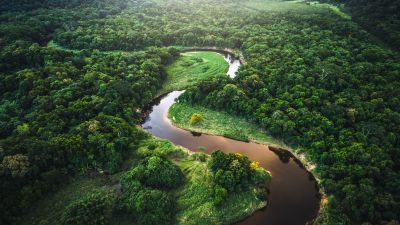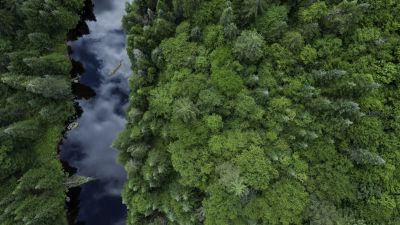Inogen Alliance offers biodiversity audits and habitat restoration services globally to safeguard species facing extinction threats. We prioritize biodiversity protection through audits, habitat mapping, and identifying plants and animals for preservation in urban, industrial zones or new development including sites such as floating solar or wind farms. Our focus is on defining ecological compensation actions for lost habitats and threatened species.
These services are essential for site development and investment projects to ensure legal compliance, sustainability, and feasibility. We conduct impact studies, ESIA (environmental and social impact analysis), EIA (environmental impact studies), and environmental due diligence to verify project impacts. We identify various threats to species and ecosystems, such as deforestation, pollution, and industrial activities, and quantify them against protected ecosystem mappings.
We provide sustainable corrective actions for projects and facilitate discussions with stakeholders, including authorities, residents, investors, and NGOs. Our goal is to harmonize business operations with environmental conservation efforts and investment projects.
Have a question or need consultation in regards to Biodiversity Protection & Habitat Restoration Services? Contact a consultant below.
Biodiversity Audits & Restoration
Together, we contribute to maintaining the essential ecosystem services provided by biodiversity, such as crop pollination, climate regulation, water purification, and protection against natural disasters. Delivering our biodiversity services globally through the Inogen Alliance allows us to coordinate conservation efforts and scale them up internationally, building ecosystem resilience and ensuring a more sustainable future for our planet and its inhabitants.

We Can Help You Achieve Environmental Biodiversity Protection for Compliance and Sustainable Developments.
Learn more about Biodiversity and Sustainable Solutions through our Global Services.
Biodiversity and Habitat Restoration Services include:
- Biodiversity Audits, including mapping of ecological habitant zones and threated species under application of national and international standards, for ex. “ISO/TC 331 biodiversity”, aspects of biodiversity in ISO 14001:2015, etc.
- Definition of Recompensating Areas & Actions (on-site and ex-situ conservation) for sustainable project feasibility in case of urbanization, real estate projects, industrial investments, site remediation and developments and terrestrial and maritime infrastructure projects.
- Definition of Sustainable Corrective Actions and Restoration Plans for efficient agriculture, Improvement of efficiency of and use & water, nutrients, and chemicals in agriculture, aquaculture, and plantations, landscape-level planning. Protection of areas that are rich in biodiversity and ensuring of essential ecosystem services.
- Advise concerning over-consumption of energy, timber, and food (especially meat), over-exploitation of wild resources, over-fishing and destructive fishing practices, protected marine areas, stop of harvesting endangered species and populations, protection and restoration of Critical Ecosystems.
- Legal Environmental Compliance concerning Bio-Diversity protection (ESIA & Environmental Due Diligences).
- Survey of site’s quality, or a species’ abundance to assess species and habitat trends and for Environmental Impact Assessment (EIA) studies for corporate reporting (ESG) or to assess compliance with national & international conservation agreements and regulations.
- Identification of biodiversity threats: Pollution and nutrient loading, illegal hunting, destruction of natural habitats, and overexploitation of resources (agriculture, mining, deforestation, etc.): habitat change loss and fragmentation, invasive alien species (bio-invasion), climate change and global warming, GMOs, desertification, biopiracy, and illegal trade of species and definition of corrective actions.
Key results:
- Mapping of existing and degraded biodiversity and ecological habitats
- Better understanding the impact and identification of actual threats on biodiversity
- Identification of compliance and sustainable corrective action needs
- Definition of specific goals set through preventive actions for protection of species under threats
- Definition of corrective actions for protection of species under threats: recompensating areas, harmonization constellations with investment projects
- Recommendations on how to reduce threats for species to be protected
- Understanding the impacts of biodiversity threats on operations and business
- Development Optimization of investors' ratings related to ESG criteria and specific to regions or countries including EU Taxonomy
Environmental Impact Studies for Floating Solar

ESC worked closely with Singapore National Water Agency (PUB) and Sembcorp Power to understand the potential short-term impact during construction and long-term impacts during operation, assess the impact and recommend mitigation measures to overcome these by the following:
- Alternative analysis with 3 different layouts of the FPV to be simulated, from which the least impact layout was chosen. Layout and PVs configurations are further optimised during detailed design to minimise potential impacts.
- Selection of high energy density PV of Passivated Emitter Rear Cell features, duo-glass material PV to be durable and resistant to all environment, and cable material to be robust and resist high mechanical load and abrasion and mount cables on floating system.
- Online monitoring of water quality, current and microclimate for Pre and during construction and operation, together with quarterly water and sediment sampling to verify online results.
- Limit water temperature increase to be below 1.5 C degree.
- Real data monitoring to be updated into the model during operation to predict long-term impacts in the next 3-5 years for contingency plan preparation.
- Further water quality simulation study was recommended to optimise the floating solar panel configurations as well as Environmental Monitoring and Management Plan (EMMP) for the pre, during, and post-construction of the project.
- The preparation for the EMMP requirements involved extensive biodiversity survey work including camera trapping which focused on the presence and behaviour of birds and otters within the reservoir, to determine any long-term environmental impacts to the fauna.
The project has been constructed sucessfully with minimum impacts throughout construction, and the first 3 years of operation. The project has won Singapore Energy Award from EMA in 2022. This project has become one of the large FPV projects in the region to be successfully constructed and operating with minimal environmental impacts.




